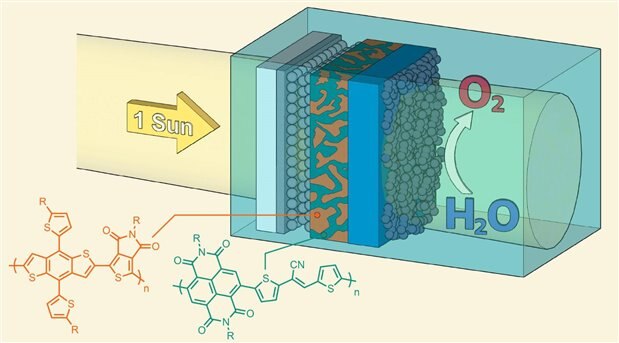EPFL scientists demonstrate an artificial leaf that produces oxygen from water, solar energy, and semiconducting polymers. (Image Credit: LMNO/EPFL)
Photosynthesis, which isn't efficient for plants, involves converting water and sunlight into oxygen and stored chemical energy. Converting solar energy into chemical fuel at an economical and globally scalable level offers an alternative to fossil fuels. The search for an efficient and affordable artificial photosynthesis process has been a decades-long undertaking. Scientists at EPFL's Laboratory for Molecular Engineering of Optoelectronic Nanomaterials (LIMNO) developed an artificial leaf that uses semiconducting polymers to achieve solar-driven water oxidization. They say these capabilities could pave the way toward solar fuel production.
Earlier systems, which weren't industrialized due to low performance and high costs, consisted of inorganic materials like metal oxides or silicon. The artificial leaf's polymeric materials, solution-processed at low temperature, contain molecularly tunable properties. As a result, these can be large-scale manufactured at an affordable cost.
The team reached this achievement by tuning the polymers' properties to equalize the water oxidization reaction requirements. Then, these were assembled into a bulk heterojunction (BJH) blend, allowing a more efficient solar-driven catalytic reaction. Optimizing the device's electronic charge conduction with engineered interfaces also contributed to the water-oxidizing photoanode based on a BHJ polymer blend. This demonstrates higher performance by two orders of magnitude compared to earlier organic-based systems. Additionally, the team discovered crucial factors leading to improved O2 production, which could present new opportunities focusing on more performance improvements.
The technique's potential could provide advancements in the polymer-based electronics field. It also presents a pathway toward affordable, efficient, and scalable solar fuel production via artificial photosynthesis.
Have a story tip? Message me at: http://twitter.com/Cabe_Atwell


Top Comments